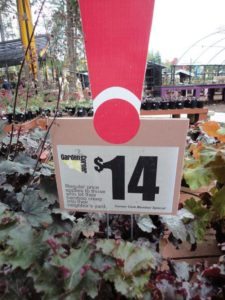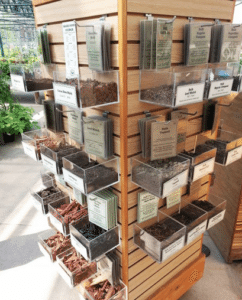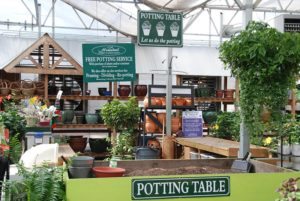Why Are You Special?
Are you worth a special trip for the consumer to make? At the end of the day, that’s the one question that looms largest in the consumers’ minds and that will make the difference between success and failure for your business.
By definition, your garden center is a destination, a venue that the consumer must make a predetermined decision to expend or invest his/her time, effort and money to travel to; in other words, a special trip.
What compels a consumer to make this conscious decision to select your store instead of all of the others available to him or her, not only other purveyors of garden products but also of all other categories of merchandise unrelated to our industry? After all, the consumer has more different opportunities to purchase, both in physical stores and online, than ever before.
What makes you special?
One of my favorite marketing gurus, Seth Godin, explained it this way, “Now that more and more is ordered online, the only trips we make are special trips. If your offering or service or your place isn’t worth a special trip, it’s likely we won’t be coming any time soon.”
A pretty ominous statement, isn’t it? However, rather than looking at this with a sense of doom and foreboding, consider it as a challenge to give the consumer a valid reason to make you a destination of choice!
It’s tempting to try to be the best at everything you do or think is important in appealing to the consumer psychology, having excellent service, prices, product, location, convenience, marketing, experiences, services, sustainability, (and everything else you can think of!) and doing it all better than any of your competitors.
The reality in this approach, however, is that either you try to the be the best at everything and have to settle for mediocrity on everything, or there’s so much going on simultaneously that the consumer simply can’t get focus on anything you’re doing.
Five Key Attitudes
It’s been proven that a better approach is to match up your core values and what you do best with what is most important to the consumer.
For example, here are five key attitudes identified by researchers and interpreted through a consumer’s perspective:
- We think price; the consumer thinks, “Honesty” is more important than “lowest,” because consumers are increasingly more time-starved, they don’t have the time or desire to shop around for the best deal. Rather, they are gravitating to the retailer who can provide consistency, honesty and fair value (not to be confused with lowest price), even if it means paying a little more. Bottom line: eliminate the hassle factor for them.
- We think product; The consumer thinks, “Good is good enough.” Most customers can’t detect, appreciate or value the small differences between what they perceive to be good, functional products from the very best, high-end products, and, more importantly, won’t pay for only incremental differences. They will, however, pay more for significant, discernible and better- explained differences and benefits, but they have to be effectively communicated and understood. Bottom line: today’s consumer wants good products that are well signed (think features and benefits), merchandised and in-stock.
- We think service; the consumer thinks, “Back to basics.” Not a surprise to anyone, today’s time-pressured consumer wants things quick, easy, simple and hassle free. Studies have found that the expectation of or desire for a high level of customer service has decreased, resulting in a trend toward a new paradigm of “self-service, with a little help.” Bottom line: ensure that the product is easily accessible, well signed, and well merchandised and displayed.
- We think access; the consumer thinks, “Make it easy for me.” Logical adjacencies, effective signing, easily navigated with wide and uncluttered aisles, and a clean, well-lit environment are all important to the consumer. Consider “project-based” merchandising, with all of the individual items needed to complete a given task or project displayed together, not only to make it easier to pick up everything needed but also to help build consumer satisfaction and confidence. Bottom line: don’t confuse them and remove any barriers to purchase.
- We think experience: the consumer thinks, “Skip the entertainment, just respect me.” While this element is the most difficult to deliver on because it’s emotional rather than pragmatic, it has the most potential for differentiating your store from all of the customers’ other venue choices and to build loyalty. Major elements in this are courteous employees who respond positively to questions and challenges such as returns, and who value consumers as valued customers. Bottom line: it’s all about them, not you or your products or services.
It’s simply not realistic or practical to think that you can effectively address all of these five attributes as absolute priorities or equally; you don’t have the time, money, energy or people to do so.
A more intelligent approach is to match up your capabilities with the consumer criteria measured through a consumer’s experience into three
levels of proficiency … exceeding expectations, meeting expectations and operating below expectations.
You Can’t Do it All
One might expect that the most successful retailers exceeded consumer expectations in all five focus areas.
But the reality is that the successful retailers consciously dominated or chose to focus their resources on exceeding expectations in just one or two (maximum!) areas, while meeting expectations in all of the other criteria.
Fred Crawford, the co-author (with Ryan Matthews) of “The Myth of Excellence,” states, “What do customers want? For businesses to ‘wow’ them in one key area (say, service), while the rm differentiates itself in a second (say, product). Put the lion’s share of your time and resources into excelling in two areas, and it’s OK, even advisable, merely to meet expectations in the other three.
“In other words, dare to be average in the other three, resisting the ever-present temptation to spend just a little more on things your customer probably doesn’t care that much about anyway.
“In fact, if you’re spreading your precious assets peanut butter-style, evenly across all ve attributes, you’re either wasting money or, worse, condemning all ve to mediocrity.”
Your opportunity is to identify those attributes and the components that are behind them that you can incorporate into your business that address these attitudes to improve your customers’ perceptions of what you offer.
Your challenge is to select those attributes where you want to dominate and differentiate those where you simply want to meet customer expectations, and determine what you need to do to take those under- performing attributes up the level of meeting expectations, and then allocate enough resources … time, money, energy, and people … to reach your goals.
And remember that, in addition to going through this assessment process for your own operation, you also want to honestly benchmark your key competition so you can take advantage of their weaknesses and compensate for their strengths.
Never forget that your store is a destination, a conscious, pre-determined choice, needing to convince the consumer why they should make the trip. So, again I ask, why are you special? …


















 Videos
Videos





